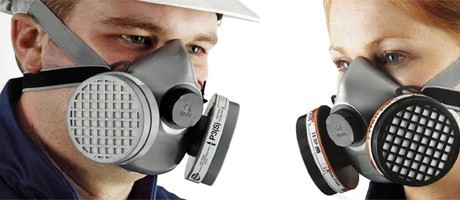Using Respiratory Protection At Work

We often don’t realise how many germs and other particles are inhaled through our mouths and noses.
However bacteria are not the only respiratory threats found in the work environment. Wearing a face mask when working with hazardous substances like gases, chemical sprays and solvents is a MUST.
It’s also your responsibility to monitor the cleanliness of the air and ventilation around you. If you notice any changes or potential risks you should take measures to protect yourself anyone else in the vicinity, and inform your employer immediately.

When searching for respiratory protection there are a few important factors to consider. Choose according to:
Your respiratory protection depends on the nature of your work. If you spend most of the time at home doing DIY projects, you can probably get by with just a few disposable masks.
However if you work in an industry with chemical or pharmaceutical materials, for example, you should increase the level of protection to a half mask with filtering cartridges.
Wearing your protection correctly is very important. Anything that is too loose or too tight can create an additional risk to your health. To make sure the mask is properly fitted to your face, check the shape and the size before using it. You should also carefully read any manufacturer instructions.
There are so many products that are considered hazardous, especially if you are exposed to them every day. Make sure that the respiratory protection you’re using is designed to protect you from dangerous substances such as chlorine, petrol, cement dust, battery acid mist and others.
There are two main groups of respiratory equipment;
These use special filters to shield you from contaminated or poisoned air. If your equipment has filtering cartridges they can be easily replaced with the new ones available on the market. They do not generate the oxygen, and for this reason they should never be used in an oxygen deficient environment. In this category you will find:
Breathing apparatus:
These use fresh air from different sources such as air cylinders and compressors. In general this equipment is more complicated and dangerous and requires special training for use. Because oftheir additional features breathing apparatus’ are used for more hazardous exposure.
In order to use your respiratory equipment for many years to come, you have to know how to store it correctly. Be sure to read the instructions provided by the manufacturer.
You should definitely avoid places that are exposed to any contamination. Try to keep it separately in a safe place that only you have access to.
Check the equipment before every use to ensure nothing is broken or out-of–date. If the product is reusable, always disinfect it correctly for the next day, or dispose of it in a designated area.
